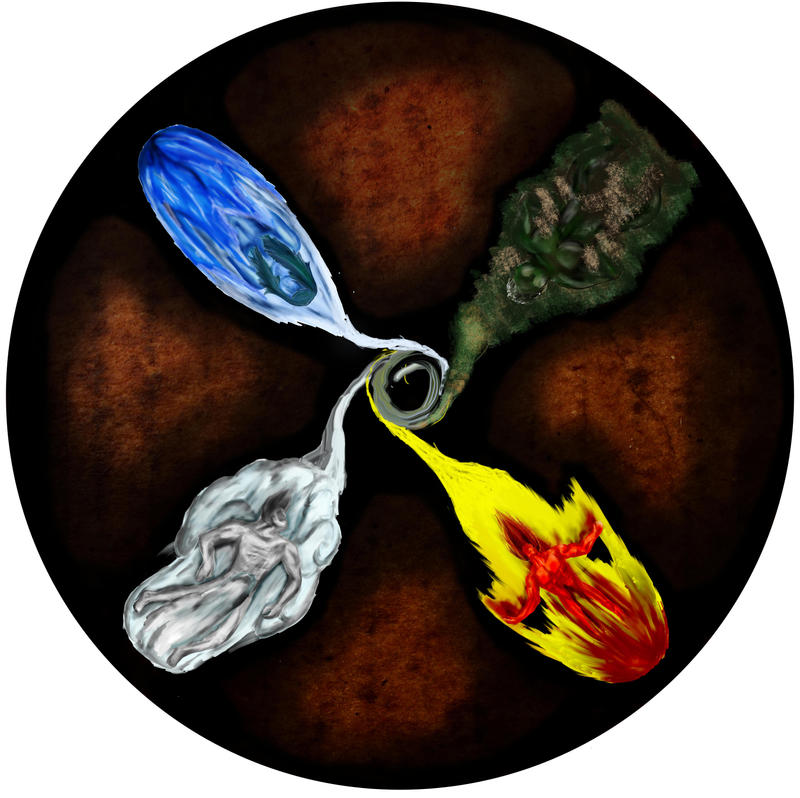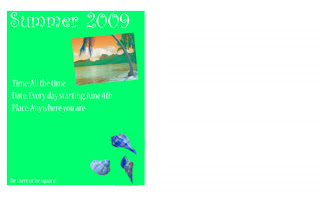Wednesday, June 3, 2009
End of the Year Reflection
Monday, June 1, 2009
Thursday, May 28, 2009
Friday, May 22, 2009
Wednesday, May 20, 2009
Tuesday, May 19, 2009
Wednesday, May 13, 2009
Edward Weston
1. In your words write a short bio of his photographic experience.
2. Describe his photographic style and some of his more famous photographs.
Weston often photographed nature and the human figure, later in his life he photographed subject in the nude and was also fond of still life.
Ansel Adams
1. In your words write a short bio of his photographic experience.
Ansel was an American photographer and environmentalist, best known for his black and white photographs of the American west and primarily Yosemite National Park For his images, he developed the zone system, a way to determine proper exposure and adjust the contrast of the final print.2. Describe his photographic style and some of his more famous photographs?
Ansel photographed nature with black and white film and majority of, if not all of his photographs were of nature or people in nature
Friday, May 1, 2009
Friday, April 24, 2009
Andy Warhol
1. In your words write a short bio of his photographic experience.
2. Who are some of the famous people or things he has photographed?
He's photographed celebrities such as Marilyn Monroe, Jackie Kennedy, Elizabeth Taylor, Mick Jagger, and Michael Jackson
Wednesday, April 22, 2009
Annie Leibovitz
1. In your words write a short bio of her photographic experience.
Annie Liebovitz worked for many years at Rolling Stone magazine as chief photographer, helping define the rolling stone look with her intimate photographs of celebrities. She's known for photographing John and Yoko and being the last person to ever professionally shoot John only five hours before he was killed. She also is known for having shot pictures of a "topless" 15-year old Miley Cyrus, and even though they considered it to be artistic, many, however, did not.
2. Who are some of the famous people she has photographed?
John Lennon and Yoko Ono, Queen Elizabeth II, and Miley Cyrus
(Annie Leibovitz taking pictures of celebrities as disney characters for Disney's Year of a Million Dreams)
Monday, April 13, 2009
Black and White Photography Questions
-optical element (the lens)
-chemical element (the film)
-mechanical element (the camera body)
2.What is an SLR camera?
single-lens-reflex camera is a camera where the photographer sees exactly the same image that is exposed to the film and can adjust everything by turning dials and clicking buttons.
3.What is the purpose of a camera's aperture?
The camera's aperture is the amount of light let into the camera and onto the picture. A smaller aperture lets in less light while a larger aperture lets in more light.
4.What does shutter speed on a camera control?
The amount of light that is in the room depends on what shutter speed you use to let in the right amount of light into the camera
5.To get the right exposure for a picture, what three things must be balanced?
-film speed
-aperture size
-shutter speed
6.To take pictures outside on a very sunny day, would you use a high or low film speed? Why?
low speed film. low speed films are optimal for shots in bright light.
7.What are the four steps for developing black and white film?
-the film is placed in developing agent
-rinsing film with water, or using "stop" bath
-fixing bath. The fixer dissolves only silver-halide crystals, leaving the silver metal behind.
-film is washed with water to remove all the processing chemicals.
8.What things are needed to make a black and white print?
-enlarger
-black-and-white paper
9.For a black and white print, the final image is actually what material?
silver
Friday, April 3, 2009
Thursday, April 2, 2009
Wednesday, April 1, 2009
Tuesday, March 31, 2009
Principles of Design




Balance- uses repetition in art to create a sense of stability. in this picture balance is shown using the three repeating different colored rectangles as well as the vertical ridges of the wall.

Variety- is the differences shown in art using different colors, shapes, textures and values. the different thicknesses of lines and colors show variety in this picture


Monday, March 30, 2009
Elements of Design

 Texture- refers to the surface quality or "feel" of an object. In this photo the texture shown is that of the brick wall. The photographer captured the texture in all the indents and bumps in the bricks.
Texture- refers to the surface quality or "feel" of an object. In this photo the texture shown is that of the brick wall. The photographer captured the texture in all the indents and bumps in the bricks. Form- is the three-dimensional element of art. The shadowing and angle of the picture show the coffee cup as a three-dimensional object with volume.
Form- is the three-dimensional element of art. The shadowing and angle of the picture show the coffee cup as a three-dimensional object with volume. 
Line- Refers to a continuous mark made on a surface by a moving point. Both the horizontal lines of the escalator and the vertical lines of the escalator rails show the line element.

Shape- shows an enclosed shape bound by other elements of art. Shapes can be either geometric or organic. This picture shows geometric shapes bound by other similar shapes.
 Value- is used to show volume, or depth, of an object in a photo. The light and dark values on the spheres of this picture show depth.
Value- is used to show volume, or depth, of an object in a photo. The light and dark values on the spheres of this picture show depth. Space- is the distance or area between, around, above or within objects. This picture depicts space in the way that the three shells are proportionally spaced across the water.
Space- is the distance or area between, around, above or within objects. This picture depicts space in the way that the three shells are proportionally spaced across the water.

























